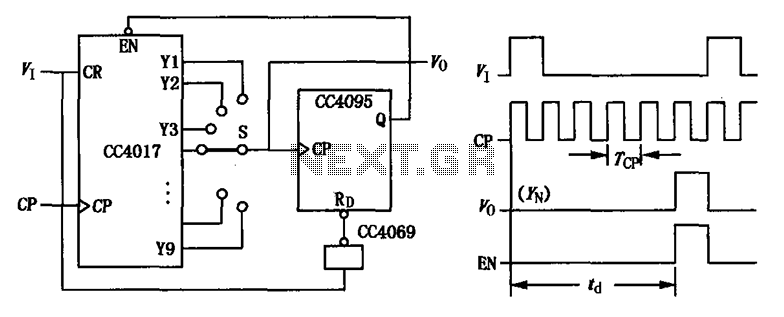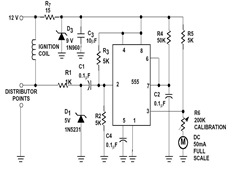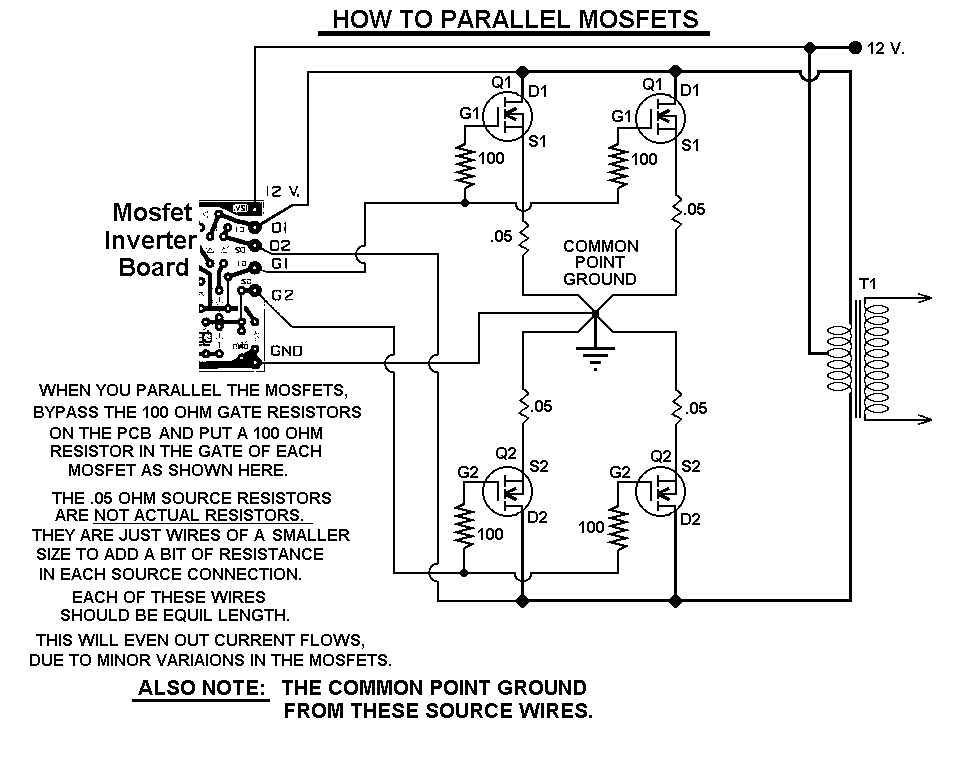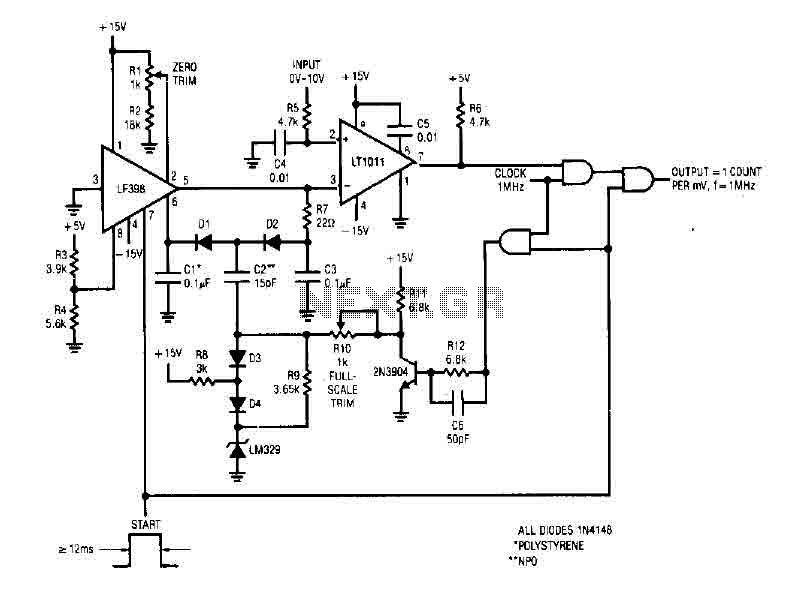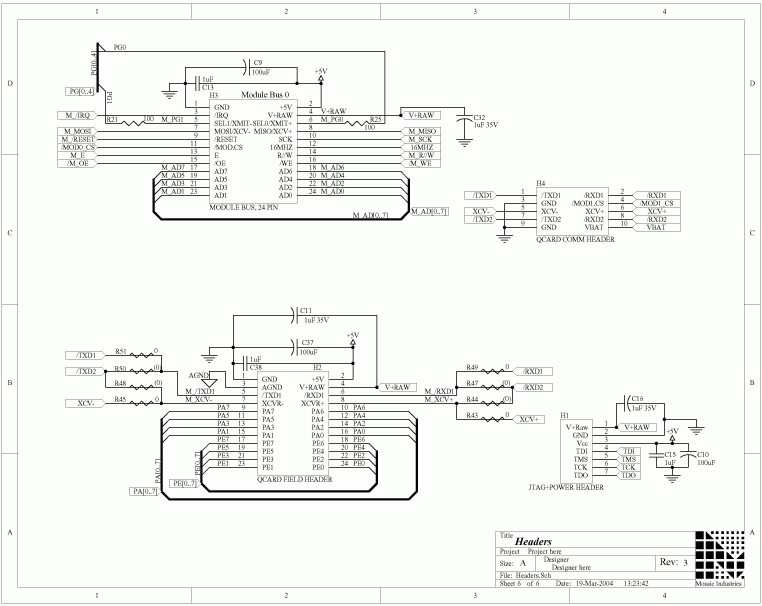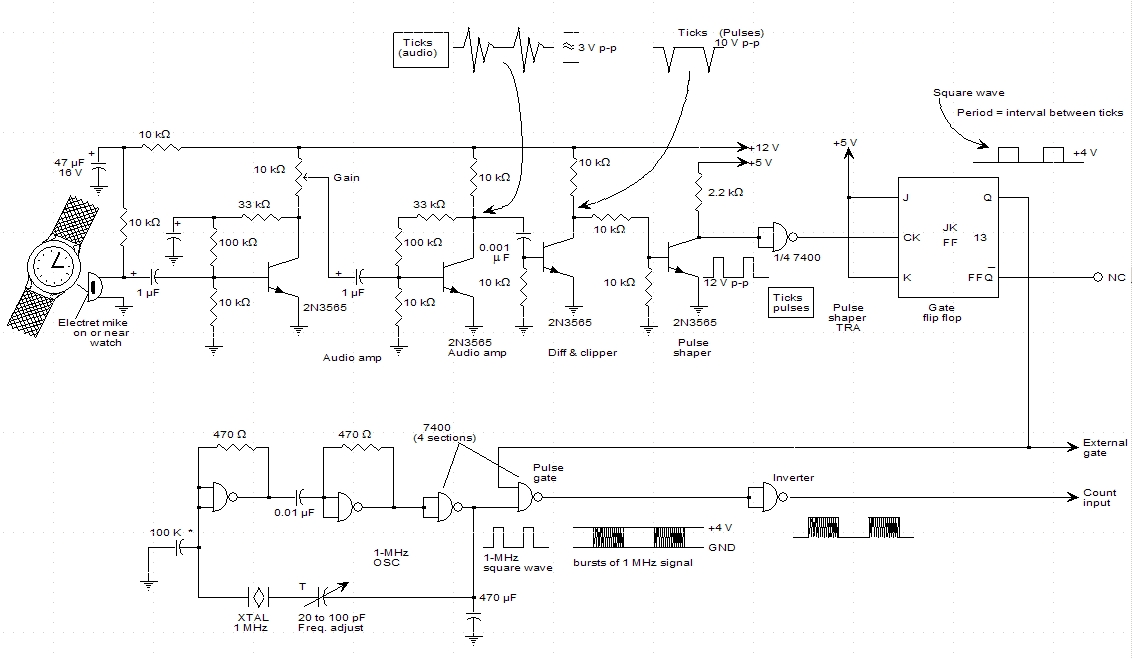
Car Headlights Timer Circuit
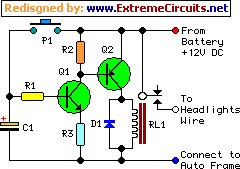
This device is a simple timer that keeps the headlights of a vehicle on for approximately 1 minute and 30 seconds, allowing access to dark areas without the need to manually switch off the lights. Activating switch P1 initiates the charging of capacitor C1 from the vehicle's 12V battery supply. This charging action turns on transistor Q1, which subsequently activates transistor Q2 and its associated relay load. The headlights are controlled through a relay contact that is wired in parallel to the vehicle's headlight switch. Relay RL1 remains engaged until the voltage across C1 drops to around 0.7V. The timing delay of the circuit is determined by the values of C1 and resistor R1, and is set to approximately 1 minute and 30 seconds. However, due to the tolerance variations of electrolytic capacitors, this delay may range from about 1 minute and 30 seconds to 1 minute and 50 seconds. An alternative configuration allows the interior lamp to serve as the command source for the timer. In this setup, when the door is opened, C1 charges, but it only discharges when the door is closed, eliminating the need for a pushbutton. To implement this modification, connect the cathode of a 1N4002 diode to the junction of R1 and C1, and connect the anode to the "live" wire of the interior lamp. This wire can be identified using a voltmeter, as it will show a 12V potential relative to the vehicle frame when the lamp is illuminated.
The circuit operates by utilizing a basic timer mechanism that relies on a capacitor and resistor to create a delay. When switch P1 is pressed, capacitor C1 begins charging. The charging current flows through R1, allowing C1 to accumulate voltage until it reaches the supply voltage level. Once fully charged, Q1 is activated, allowing current to flow through Q2, which energizes the relay RL1. The relay contacts close, completing the circuit to the headlights and keeping them illuminated.
The timing characteristics of the circuit are dependent on the RC time constant, which is calculated as τ = R1 × C1. The precise timing can be adjusted by varying the resistance of R1 or the capacitance of C1. For example, increasing R1 will lengthen the time it takes for C1 to charge, resulting in a longer delay before the headlights turn off. Conversely, increasing C1 will also extend the timing, but care must be taken to select a capacitor with a suitable voltage rating and tolerance.
In the variation where the interior lamp is used as a command source, the diode configuration ensures that C1 can only discharge when the door is closed, providing a more automated lighting solution. This is particularly useful for scenarios where manual operation may be inconvenient. The diode prevents backflow of current, ensuring that the charging and discharging processes are properly isolated.
Overall, this timer circuit provides a practical solution for maintaining headlight illumination in low-light conditions while incorporating flexibility for different operational modes. The design is simple yet effective, making it suitable for various automotive applications.This device is a simple timer, allowing to keep on the headlights of your vehicle for about 1min. and 30sec. , e. g. when accessing some dark place, without the necessity of coming back to switch-off the lights. Pushing on P1 allows C1 charging to full 12V battery supply. Therefore Q1 is driven hard-on, driving in turn Q2 and its Relay load. The hea dlights are thus activated by means of the Relay contact wired in parallel to the vehicle`s headlights switch. RL1 remains activated until C1 is almost fully discharged, i. e. When its voltage falls below about 0. 7V. The timing delay of the circuit depends by C1 and R1 values and was set to about 1min. and 30sec. In practice, due to electrolytic capacitors wide tolerance value, this delay will vary from about 1min.
and 30sec. to 1min. and 50sec. An interesting variation is to use the inside lamp as a command source for the timer. In this way, when the door is opened C1 is charged, but it will start to discharge only when the door will be closed, substituting pushbutton operation. To enable the circuit acting in this way, simply connect the cathode of a 1N4002 diode to R1-C1 junction and the anode to the "live" lead of the inside lamp.
This lead can be singled-out using a voltmeter, as it is the lead where a 12V voltage can be measured in respect to the vehicle frame when the lamp is on. 🔗 External reference
The circuit operates by utilizing a basic timer mechanism that relies on a capacitor and resistor to create a delay. When switch P1 is pressed, capacitor C1 begins charging. The charging current flows through R1, allowing C1 to accumulate voltage until it reaches the supply voltage level. Once fully charged, Q1 is activated, allowing current to flow through Q2, which energizes the relay RL1. The relay contacts close, completing the circuit to the headlights and keeping them illuminated.
The timing characteristics of the circuit are dependent on the RC time constant, which is calculated as τ = R1 × C1. The precise timing can be adjusted by varying the resistance of R1 or the capacitance of C1. For example, increasing R1 will lengthen the time it takes for C1 to charge, resulting in a longer delay before the headlights turn off. Conversely, increasing C1 will also extend the timing, but care must be taken to select a capacitor with a suitable voltage rating and tolerance.
In the variation where the interior lamp is used as a command source, the diode configuration ensures that C1 can only discharge when the door is closed, providing a more automated lighting solution. This is particularly useful for scenarios where manual operation may be inconvenient. The diode prevents backflow of current, ensuring that the charging and discharging processes are properly isolated.
Overall, this timer circuit provides a practical solution for maintaining headlight illumination in low-light conditions while incorporating flexibility for different operational modes. The design is simple yet effective, making it suitable for various automotive applications.This device is a simple timer, allowing to keep on the headlights of your vehicle for about 1min. and 30sec. , e. g. when accessing some dark place, without the necessity of coming back to switch-off the lights. Pushing on P1 allows C1 charging to full 12V battery supply. Therefore Q1 is driven hard-on, driving in turn Q2 and its Relay load. The hea dlights are thus activated by means of the Relay contact wired in parallel to the vehicle`s headlights switch. RL1 remains activated until C1 is almost fully discharged, i. e. When its voltage falls below about 0. 7V. The timing delay of the circuit depends by C1 and R1 values and was set to about 1min. and 30sec. In practice, due to electrolytic capacitors wide tolerance value, this delay will vary from about 1min.
and 30sec. to 1min. and 50sec. An interesting variation is to use the inside lamp as a command source for the timer. In this way, when the door is opened C1 is charged, but it will start to discharge only when the door will be closed, substituting pushbutton operation. To enable the circuit acting in this way, simply connect the cathode of a 1N4002 diode to R1-C1 junction and the anode to the "live" lead of the inside lamp.
This lead can be singled-out using a voltmeter, as it is the lead where a 12V voltage can be measured in respect to the vehicle frame when the lamp is on. 🔗 External reference
